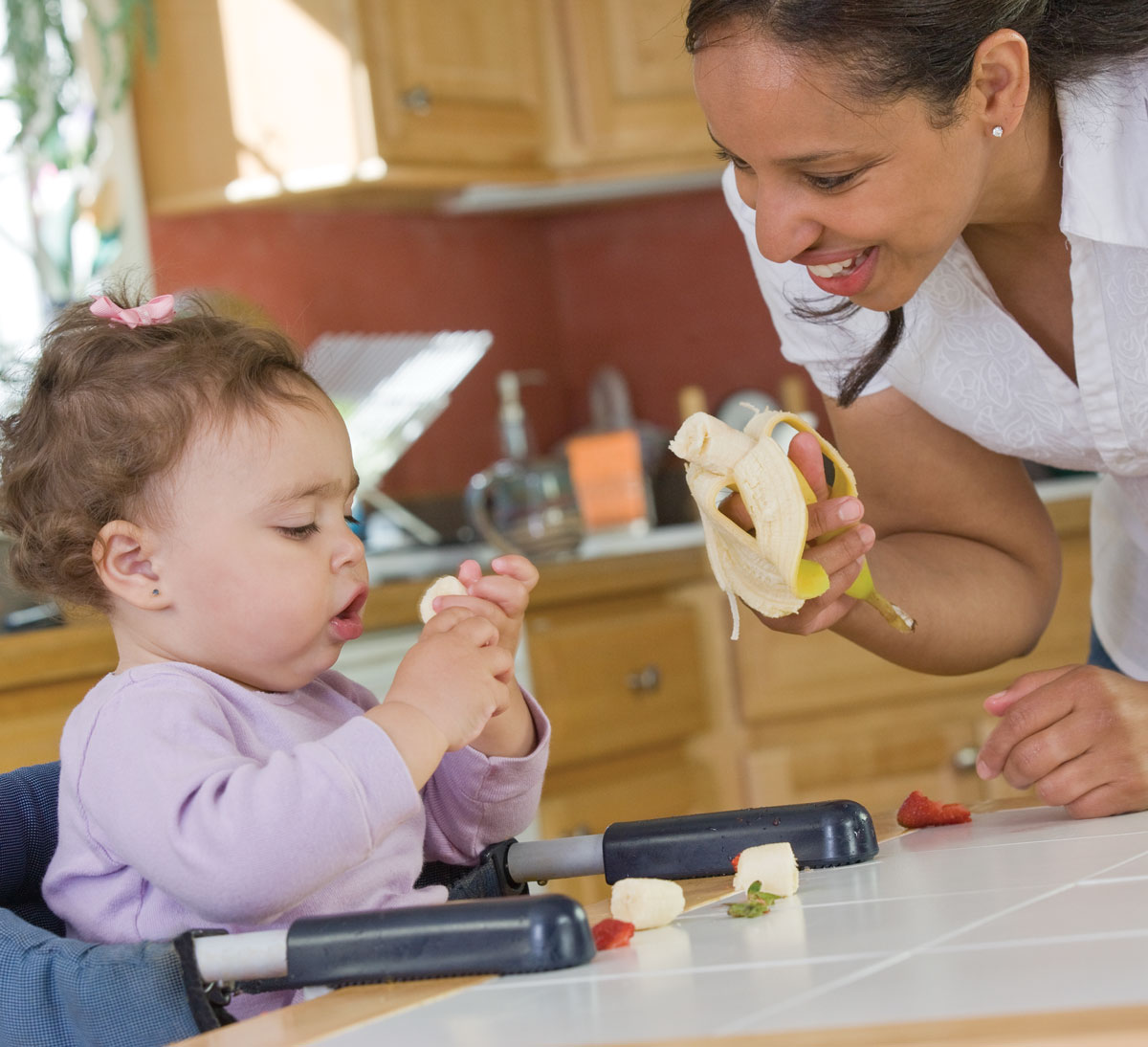How to feed your almost-toddler
- Home
- Ellyn Satter
- Older Baby / Almost Toddler
- Older Baby / Almost Toddler (9-12 Months)
- How to feed your almost-toddler


After your child learns to eat easy-to-chew and easy-to-swallow food, she is ready to eat at family meals. Put her in a high chair or booster seat, lay something on the floor to catch spills, and serve her the parts of the meal she can eat. Let her feed herself with her fingers while you enjoy your own meal.

Don’t let her eat or drink all day long. Don’t let her carry around a bottle.
Don’t feed her. Don’t pile and arrange her food. Don’t go off and leave her while she eats.
Don’t give her a lot or not enough. Don’t make her eat one food before she can have another.
Don’t hurry her up or slow her down. Don’t make her eat more. Don’t feed her.
Don’t talk a lot. Don’t be pushy. Don’t ignore her. Don’t watch TV. Don’t leave.
Don’t stop offering food she doesn’t eat right away.
© Ellyn Satter
Side-Lying Hold
This hold is useful when:
Cross-Cradle Hold
This hold is useful when:
Clutch or “Football” Hold
This hold is useful when:
Cradle Hold
This hold is useful when:
Laid-Back Hold
This hold is useful when: